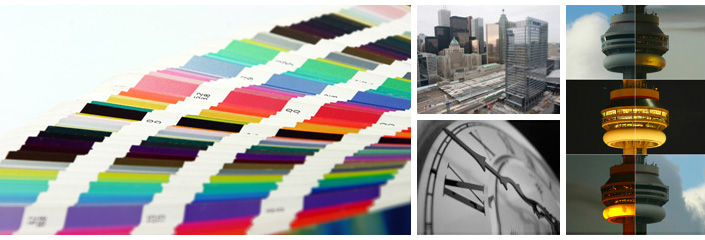Call Us: (416) 920-3040 |
 |
|||||||||||||||||||||||||||||||||||||||||||||||||||||||||||||||||||||||||||||||||||||||||||||||||||||||||||||||||||||||||||||||||||||||||||||||||||||||||||||||||||||||||||||||||||||||||||||||||||||||||||||||||||||||||||||||||||||||||||||||||||||||||||||||||||||||||||||||||||||||||||||||||||||||||||||||||||||||||||||||||||||||||||
PREPRESS REQUIREMENTS |
|||||||||||||||||||||||||||||||||||||||||||||||||||||||||||||||||||||||||||||||||||||||||||||||||||||||||||||||||||||||||||||||||||||||||||||||||||||||||||||||||||||||||||||||||||||||||||||||||||||||||||||||||||||||||||||||||||||||||||||||||||||||||||||||||||||||||||||||||||||||||||||||||||||||||||||||||||||||||||||||||||||||||||
FontsEnsure no pseudo/faux fonts are used, i.e. fonts created by pressing the italic or bold buttons on the font menu. Fonts should be selected by name, i.e. if you are working in Souvenir Demi Bold and you require italic, you should scroll down your font menu until you find Souvenir Demi Bold Italic. Being disciplined about this will avoid problems such as using a font that does not exist (several fonts in the Rotis family have no italics, for example).If you are using a font which you wish to italicise and there exists no italic version of the font, you can always skew the type.Supply all fonts used with the job. If you are using software such as Quark or InDesign with a Collect for Output function that can gather fonts, then always use this. This will ensure all component parts of the fonts used are sent. |
FilesWe will accept files in the following formats: .pdf, .tif, .ai, .indd, .cdr, qxd. You can alternatively make a high-resolution press-ready PDF. This can then be used for either digital or offset-litho printing. Always make your PDF with fonts embedded and all compression settings turned off. Always make your pdf with cut-marks and 0.125 in bleeds. BleedsAny document that has any part of its image area running right up to the trim (i.e. the very dge of the page) must have a 3mm continuation of that image area over the edge of the trim. This is known as Bleed. This is the case for any commercial printing. |
||||||||||||||||||||||||||||||||||||||||||||||||||||||||||||||||||||||||||||||||||||||||||||||||||||||||||||||||||||||||||||||||||||||||||||||||||||||||||||||||||||||||||||||||||||||||||||||||||||||||||||||||||||||||||||||||||||||||||||||||||||||||||||||||||||||||||||||||||||||||||||||||||||||||||||||||||||||||||||||||||||||||||
ColourAll files and placed graphics must be submitted in the CMYK colour space or in SPOT colours or in Grayscale if they are only black. Delete all unused colors in your documents, be sure the rest are defined as spot colors. Be sure the colors defined in your graphic files match those in the document. Print color separations to your laser printer and be sure all items print on the correct separation. Process Colour documents
|
GraphicsLineart/bitmaps should be scanned at 800-1000 dots per inch, and as close to the final required size as possible. Greyscale/colour images should be scanned at 300 dots per inch, and as close to the final required size as possible. images required for commercial print should be supplied as either Greyscale, Bitmap or CMYK. No other file formats are useable. images can be supplied as TIFs (without LZW compression) or as EPSs (saved as binary, not JPEG). All of the above also applies if you have been supplied with images on disk: almost certainly they will not correspond to these parameters but you can make them do so with Photoshop or Illustrator. Low-resolution images. Often you will be supplied with images (almost certainly JPEGs) which are 72dpi resolution. Just changing this to 300dpi resolution will not improve the image. To get a true 300dpi resolution you need to divide the image dimensions by 4 (4 x 72 = 288, which is close enough to 300 for our purposes). So, if you have a JPEG which is 80cm wide but only 72dpi, then converting its width to 20cm while at the same time changing the resolution to 300dpi will result in an image which is of a high-enough resolution for commercial print. Web graphics. All graphics produced for websites are far too lowresolution for commercial printing. If you download a 2cm wide logo from a website and then place it in a document intended for printing, it will look very poor. The only way to increase its quality is to do the reduction described above, but in this instance that would result in a logo that was only 5mm wide... |
||||||||||||||||||||||||||||||||||||||||||||||||||||||||||||||||||||||||||||||||||||||||||||||||||||||||||||||||||||||||||||||||||||||||||||||||||||||||||||||||||||||||||||||||||||||||||||||||||||||||||||||||||||||||||||||||||||||||||||||||||||||||||||||||||||||||||||||||||||||||||||||||||||||||||||||||||||||||||||||||||||||||||
|
|||||||||||||||||||||||||||||||||||||||||||||||||||||||||||||||||||||||||||||||||||||||||||||||||||||||||||||||||||||||||||||||||||||||||||||||||||||||||||||||||||||||||||||||||||||||||||||||||||||||||||||||||||||||||||||||||||||||||||||||||||||||||||||||||||||||||||||||||||||||||||||||||||||||||||||||||||||||||||||||||||||||||||
|
Print City is located on Bloor Street W and Avenue Rd., Toronto and proudly serves the surrounding communities including Yorkville, Queen's Park, University of Toronto, Church and Wellesley, Spadina Ave, Queen St and Downtown Toronto GTA.
|
||

